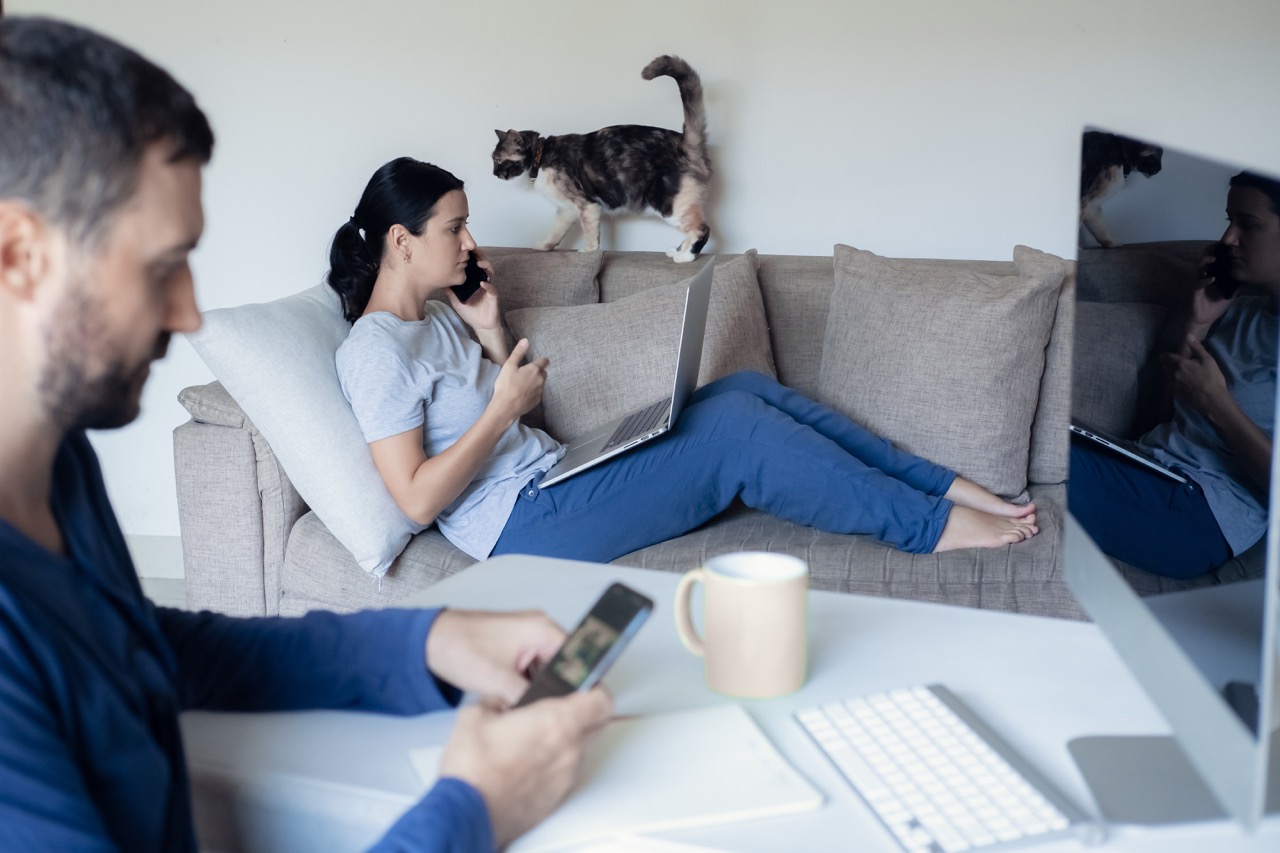Understanding Your Cat’s Body Language: A Definitive Guide
Cats are highly evolved, elegant, and intelligent creatures and they often don’t get the credit they deserve. After all, there’s a reason that lions are known as the kings of the jungle, and it isn’t just because of their speed, strength, and size. It’s also because of how smart and intuitive they are, and your house cat is no different.
While house cats, hopefully, aren’t as big or fearsome as lions, they’re every bit as intelligent and communicative. However, because cats don’t have the ability to speak, they communicate their feelings and emotions in different ways, mostly with their body language. Therefore, if you want to better understand your cat and what they’re trying to tell you, it’s important to know how to read and translate its body language.
- Body Language Indicating Your Cat is Happy
- Body Language Indicating Your Cat is Scared
- Body Language Indicating Your Cat Wants to Play
- Final Thoughts
- Body Language Indicating Your Cat is Happy
In most cases, it’s easy to tell when your cat is happy and relaxed because they won’t be doing anything. Cats love to lie down and relax, but they’ll only do so when they feel safe and happy. However, there’s also a chance that you just have a lazy cat, and they would be chilling out whether they’re happy or not. Therefore, here are a few other signs of happiness to look for.
Body
By body, we mean how they’re positioned. If your cat is lying down lazily on their sides or back, it’s a sure sign they’re relaxing and happy. Your cat can also be happy in a sitting position, and they’ll show it by sitting upright, possibly with their tail wagging gently.
Eyes
We’ve all heard the term “cat eyes” before, and it’s often when people look at you with gentle, soft eyes, usually only open halfway or slitted. This term gets used for a reason because it’s how your cats' eyes will look when they’re happy or relaxed. Cats will also blink slowly if they’re relaxed, rather than rapidly, or not at all if they’re on high alert.
Tail
The tail is one of the best communicative tools that dogs and cats have. A sure sign that your cat is happy is if its tail is straight behind it or wagging gently. Happy cats will also curl their tails behind them in a soft U if they’re relaxed or happy. If they’re down between their legs or straight up, however, it’s a sign of fear or aggression.
Ears
Aside from their tails, your cat’s ears are the second-best communicative tool. Upright ears are a great sign that your cat is enjoying life.

Body Language Indicating Your Cat is Scared
While house cats are almost always happy and relaxed, it’s inevitable that they won’t get scared from time to time. After all, there’s a term known as “scaredy cat” for a reason, and it’s because of how obvious it is when cats get scared.
Body
Aside from turning tail and running away, cats will use their body to display fear or caution in other ways. For example, if they’re lying flat on their bellies and staring intently at something, it means they’re trying to conceal themselves. It’s possible they’re on the hunt, but it’s most likely because they spotted something they’re frightened of.
If hiding isn’t an option and they’re face to face with their fear, they will stand up and arch their backs in an effort to seem bigger than they are.
Eyes
A frightened cat will have its fight or flight senses in overdrive. As a result, their eyes will get huge and their pupils will be very dilated. Once again, they do this same thing when they’re excited about something or hunting, so it’s important to read your cat’s body language as a whole, as well as the situation.
Tail
A frightened cat’s tail will do one of three things - it will either be straight up, stiff and rigid, tucked between its legs, or wrapped around its body to protect itself.
Ears
When it comes to fear, your cat’s ears are the main thing to watch out for. A scared cat’s ears will be flicking rapidly back and forth, straight back, or flat against the side of its head.
Body Language Indicating Your Cat Wants to Play
Cats are one of the most playful pets that you can own, and they communicate their desires with their bodies.
Body
If your cat appears bouncy or is pouncing, it’s a sign they want to play or are hunting something. Cats will also lie flat on the floor while intently watching something if they’re on the hunt. Finally, cats will lie on their backs with their feet in the air if they want to play with a ball of yarn or have their belly rubbed.
Eyes
As is the case when they’re scared, a cat's eyes will get large and dilated when they want to play. This happens because they’re watching something intently.
Tail
A playful cat will often have a gently wagging, upright tail. However, some will have their tails down when they’re preparing to pounce or jump on something.
Ears
If a cat is feeling playful, its ears will be up and pointed forward or slightly to the side. However, they should never be flat back or straight sideways.

Other Forms of Body Language Cats Use to Communicate
In addition to these forms of body language, there are several other things to watch out for.
A Sick Cat
If your cat is sick, it won’t act like itself. They will be lethargic and quiet and won’t exhibit their normal signals. Most times, they will have glossy or glazed eyes, have their ears down, and bow their heads more often than usual.
A Kneading Cat
A kneading cat is a needy cat. Kneading is when your cat flexes their paws back and forth, up and down, and they often do this after climbing into your lap. Cats do this when they’re feeling hungry or in need of love and comfort. You should give your cat some rubbings and belly scratchings if they do this to you.
Rubbing Against Things
While it can be slightly annoying when your cat rubs up against your leg or other objects, it’s usually a sign of love and affection. However, rubbing against things is also like the dog equivalent of peeing on them. Cats rub against items to mark their territory with their scent as a sign to other cats.
Final Thoughts
As you can see, cats are fascinating and intelligent creatures. They’ve created their own language using their bodies to tell you what they’re feeling and thinking. By paying attention to your cat's body language, you can understand them better and ensure their needs get met.






